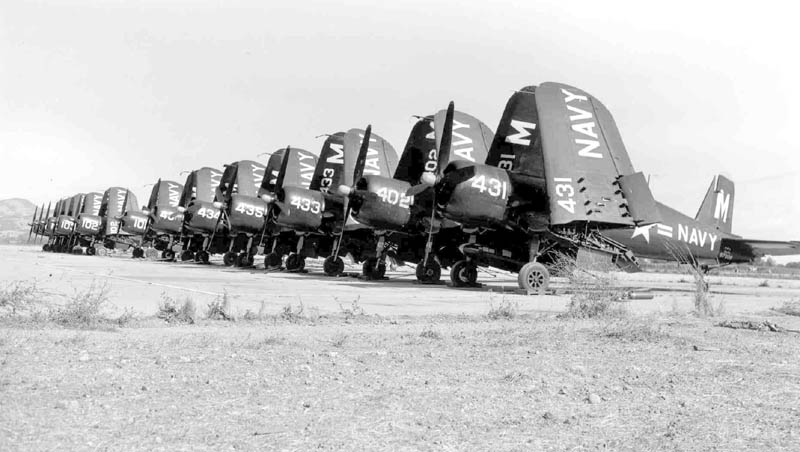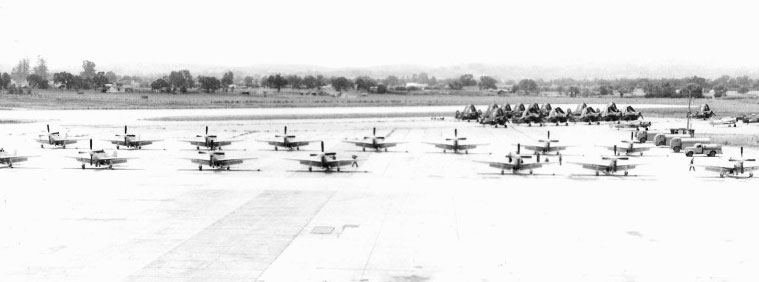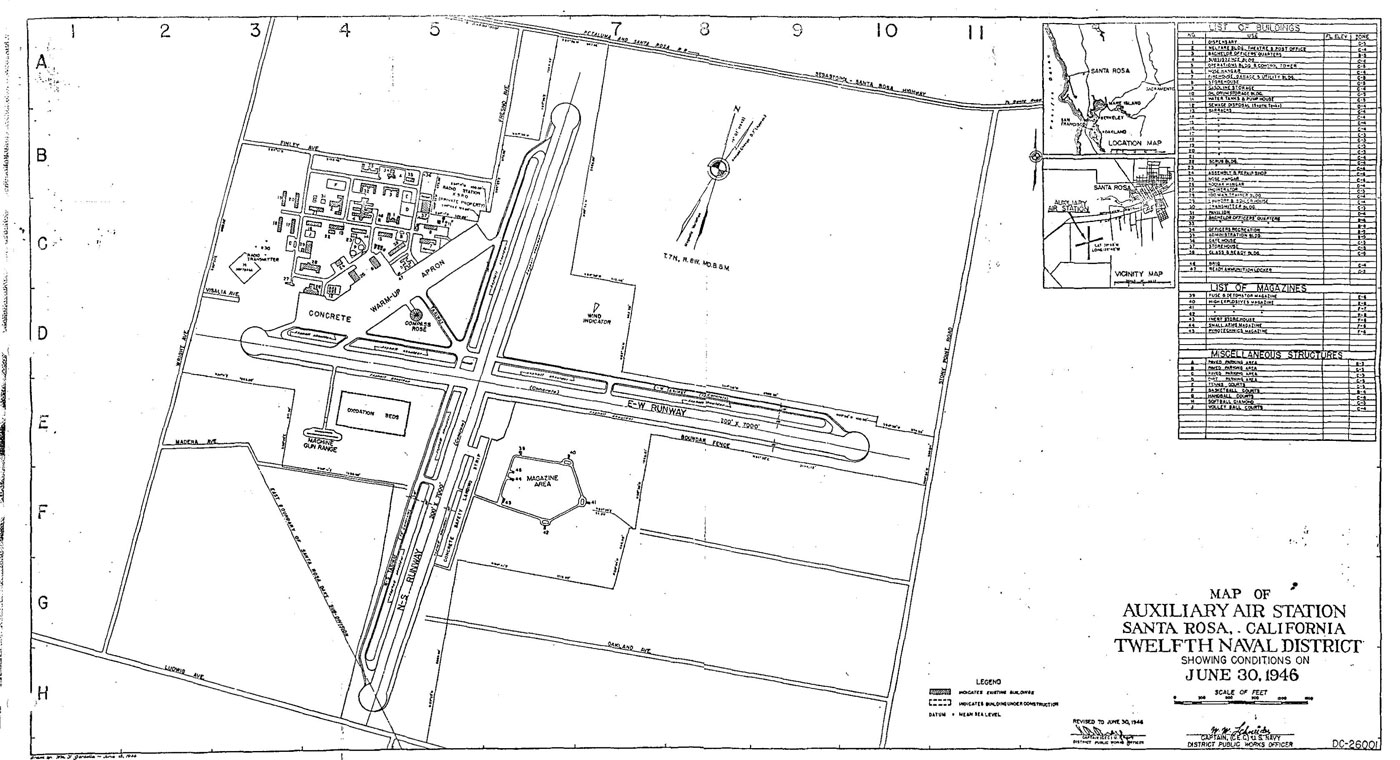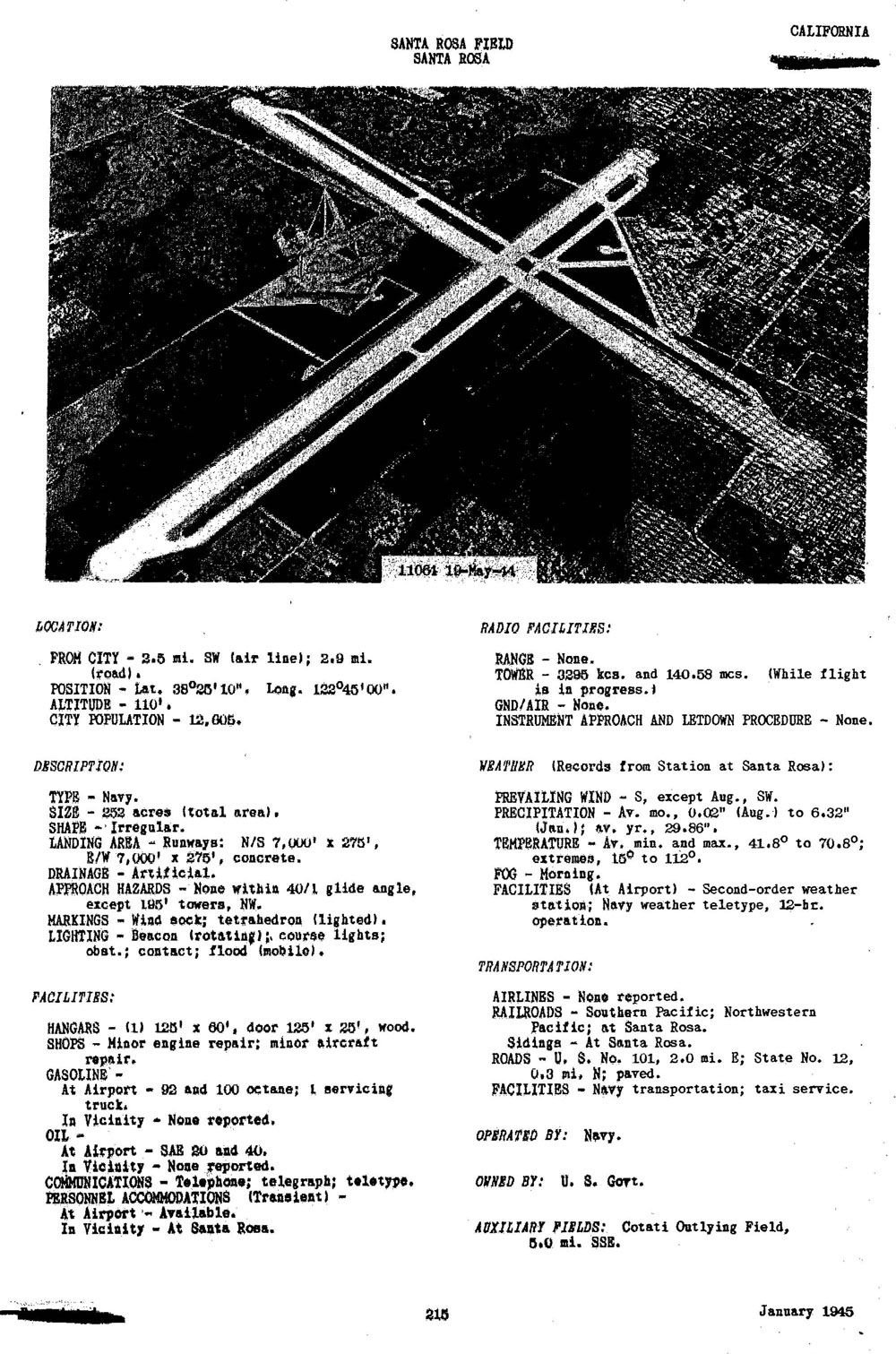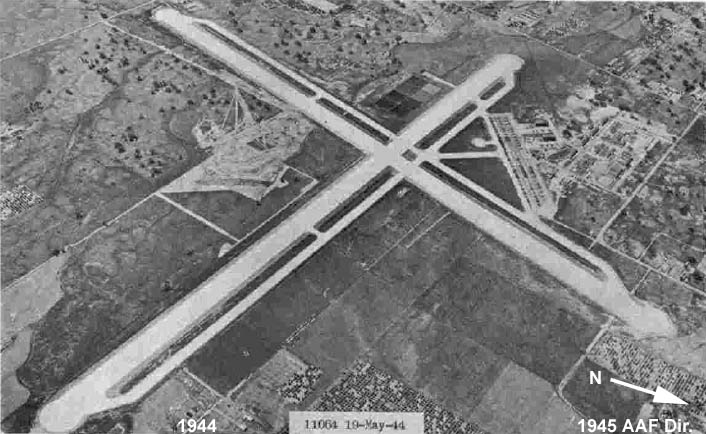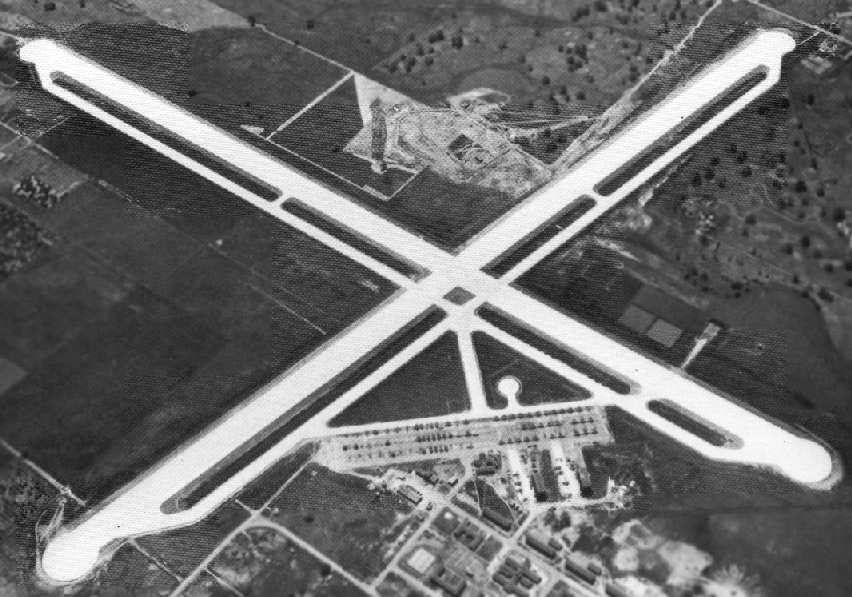

In 1942, the Navy traveled to Sonoma County, northwest of San
Francisco Bay, and purchased property to build a main station
and an OLF. Construction of the proposed NAAS began in November
1942, near the small town of Cotati, eight miles south of Santa
Rosa. The next month, work began on an OLF 2.5 miles southwest
of Santa Rosa. When drainage problems were encountered at Cotati,
the Navy reversed the plans developing Santa Rosa as the main
station and Cotati as the OLF. NAAS Santa Rosa commissioned on
June 29, 1943, an auxiliary of Alameda.
Beginning on August 6, the station's first tenant, CASU 13, arrived for training prior to embarking for the South Pacific. CASU 13, departed on September 20, and four days later, CASU 18 arrived. CASU 18's stay lasted less than a month when it also departed. On October 20, CASU 36 commissioned and was permanently based at the station to support the carrier squadrons present. For the next few months, several squadrons were aboard including VT-2, VB-2, VB-11, VF-28, and VC-4.
Starting in January 1944, the first of three shore based support squadrons arrived for several months of operational training. These squadrons, VB-301, VB-302, and VB-303, operated SBDs -- the last one departed May 3. CAG 6, reformed at Alameda in April, transferred to Santa Rosa on May 10, and conducted operational training for the next six months. About the same time, an expansion program doubled the station's aircraft capacity. In September, the first unit of CAG 5, VT-5, came aboard. After CAG 6 left in November, CAG 5's remaining squadrons, VF-5 and VB-5, transferred in. The next two months, Marine fighter squadrons VMF-452 and VMF-214, assigned to CAG 5, joined the air group at Santa Rosa for training. CAG 5, along with the Marine squadrons, embarked on the Franklin.
February 8, 1945. CAG 19 replaced CAG 5 later in February with a new VBF bomber/fighter squadron of F6Fs. VF-19 received the Navy's first F8F Bearcats in May. The war ended before the Bearcats reached the combat area. Santa Rosa finished out the war with CAG 11's and VBF-151 aboard.
Santa Rosa's 498 acres had two 7,000 x 200-ft. con crete runways plus a catapult and arresting gear system. Total Navy investment in the facility topped $4.5 million. In a rather mundane matter, the Navy sold hay cut on the property in May 1945 for $51. The station had two OLFs -- Cotati and Little River OLF in Mendocino County to the north. The Navy leased the airport at Little River in January 1945, as an emergency field for the numerous flights between Santa Rosa and the rocket training station at Arcata.
Santa Rosa's status changed from an NAAS to an OLF of Alameda in 1947. The station saw renewed activity during the Korean War by ADs, F4Us, and F9Fs. Following the Korean War, the Navy deeded the facility to the City of Santa Rosa. The airport was known as the Santa Rosa Air Center and remained open until 1993. In 1996, the property was in the hands of developers. The airfield at Cotati is also no longer in existence -- the property is occupied by a K-Mart and industry. During the war, the Army developed Santa Rosa's existing municipal airport, seven miles northwest, as an Army Air Field. Today, that airfield, Sonoma County, serves as Santa Rosa's municipal airport.
Copied with the permission of the author from United States Naval Air Stations of World War II.
